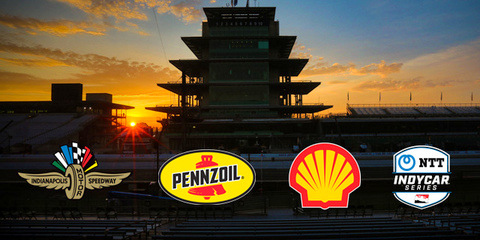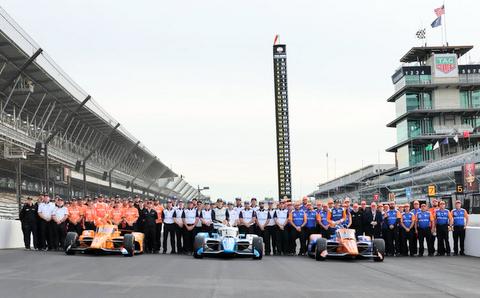Racing Toward Sustainability
IndyCar, the organizers of an open wheel racing series based in the United States, best known for its Indianapolis 500 race, has made a commitment to be a leader in sustainable motorsports. The organization announced steps recently, along with Shell and Pennzoil, the official fuel, motor oil and lubricant sponsors of the NTT IndyCar series.
Hybrid Power
IndyCar will make the switch to hybrid gasoline-electric engines with the 2024 race season, joining F1 and IMSA, two race series that already use hybrid systems. Technical specifications have not been released, but expect the hybrid IndyCar engine to incorporate a turbocharged gasoline engine, the continued use of the push-to-pass system where short bursts of increased turbo boost—or electric power?—are controlled by the driver, and a kinetic energy recovery system called KERS. KERS is where kinetic energy, which is present in the waste heat created by the car’s braking process, is stored and converted into power that can be called upon to boost acceleration.

100% Renewable Race Fuel
Shell will produce a new race fuel that will be used beginning in 2023. This fuel consists of a blend of second-generation ethanol derived from sugarcane waste and other biofuels. The fuel will be comprised of 100% renewable feedstocks. Shell says this new race fuel “enables at least 60% greenhouse gas emissions reduction compared to fossil-based gasoline” on a lifecycle basis compared to the current fuel.
Note: IndyCar currently uses E85 (85% ethanol/15% gasoline), though at a higher octane blend than what is available for street cars.
Carbon Neutral Oil
Shell Pennzoil synthetic oils, which are carbon neutral, currently power all engines running in the IndyCar series. What exactly is carbon neutral? Shell gives us two explanations.
- “The term ‘Carbon Neutral‘, indicates that Shell has engaged in a transaction where an amount of carbon dioxide equivalent associated with the acquisition and pre-processing raw materials, lubricant production, packaging, distribution, and the subsequent use and end of life treatment of the used materials in relation to the Shell Lubricants products, has been removed from the atmosphere through a nature-based process, or emissions saved through avoided degradation of natural ecosystems.”
- “Compensate for CO2e emissions for the life cycle of our products using globally diverse, externally verified and high-quality, nature-based carbon credits.”
Let’s just leave it that carbon neutral motor oils are more environmentally friendly than those that aren’t.

Observations: Motorsports Sustainability
Environmentally friendly car racing: an oxymoron? Not so much as you would think. The world of motorsports has a challenging task to reduce its ecological footprint while raising the public’s perception of racing environmental impact. Any incremental steps, wherever possible, add to significant progress in lessening the sport’s overall environmental impact.
Motorsports is a $13.5 billion business and the greening of auto racing is the newest twist in cars that go fast. Technology advances made in tires, fuels, oils and vehicles (such as electrification and hybridization) have already reached the cars we buy at our local dealership. Race teams are staffed with degree-holding engineers, many of whom could have worked in aerospace or other technology fields, but chose motorsports. The result is fast-paced entertainment that also is becoming a leader in environmental awareness.
The emissions-free Formula E open-wheeled cars, similar in looks to IndyCar and F1, are powered completely by electricity. While this is more environmentally friendly than a hybrid engine, don’t expect this technology to be the preferred propulsion system in the near future. Car racing enthusiasts have a need for sound, something an all-electric race car can’t provide unless it gets some auditory assistance.
Make sure to opt-in to the Clean Fleet Report newsletter (top right of page) to be notified of all news stories and vehicle reviews.
Story by John Faulkner. Photos by IndyCar.
More Green Motorsports News:
Green Motorsports: Subaru Hits the Track To Improve the Breed
Green Motorsports: MotoE Electrifies Motorcycle Racing
Green Motorsports: EL1 Camaro—Electric Drifter

1 thought on “Green Motorsports: IndyCar Switches to Cleaner Cars & Fuel”